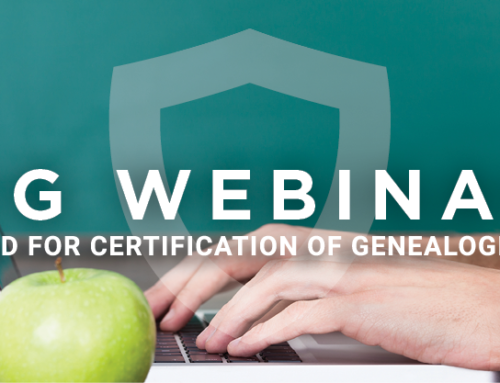Turning Raw Information into Evidence: Tips for Drawing and Explaining Conclusions
Presented by J.H. Jay Fonkert, CG®
Reviewed by Jean Atkinson Andrews, CG®
NOTE: This post is one of a series reviewing the BCG Skillbuilding lectures presented at the National Genealogical Society’s 2019 Family History Conference held in St. Charles, Missouri from 08-11 May, 2019. Recordings of these lectures and the accompanying session handout can be purchased from PlaybackNow NGS at https://www.playbackngs.com/
 Jay opens what he describes as an “ambitious topic” with the thorny genealogical question…“How do you know what you think you know?”
Jay opens what he describes as an “ambitious topic” with the thorny genealogical question…“How do you know what you think you know?”
Productive research creates progress. Accurate connections between parents and children and the true stories of our ancestor’s lives are what we strive for. The method and tips for getting there are shared in this lecture.
Efficient research is question driven – and the best questions are often Who, What, When, and Where. Jay provides examples of three types of good research questions.
Questions about relationships – father/son, mother/daughter, brother/sister
Questions about identity – Is John Jones in Indiana the same man as John Jones in Kentucky?
Questions about activity or presence – What was the person doing or were they in a specific place at a specific time? Was John Jones in Indiana between 1882 and 1890?
We might also begin with an interest in a specific research subject. Obtaining and assembling everything we can about a subject we find gaps in our knowledge, a “brick wall.” Those gaps must be addressed by creating specific research questions.
Jay discusses three basic steps as a strategy for solving difficult problems – establish the existence of a person at a point in time; follow that person forward and backward in time; link the individual to a family or across generations. The Genealogical Proof Standard (GPS) provides both a compass to guide us and a yardstick to measure progress.
He provides three reasons why a reasonably exhaustive search is so important.
• It improves the odds of finding relevant information
• Increases opportunities to find direct evidence
• Raises the odds of uncovering conflicting evidence you need to know about!
Presenting research as a three-dimensional (3D) activity is a creative way to think about the process. Jay uses the analogy of a cube to describe searching across time, across broad swaths of geography, and always, always the subject’s associates. The evidence we need could be anywhere on that spectrum.
The types of proof arguments and their requirements are reviewed. Often, we cannot find direct evidence that answers our research question, so we must rely on indirect evidence. This is where logic comes into focus. Indirect proofs tend be more complex and harder to explain, so writing becomes important in constructing indirect proof arguments.
His final Tidball example illustrates a 3D search across thousands of miles, 150 years, and numerous associations with and tangential to the research subject. It is an inspiring example of what is possible through following the GPS.
The words Certified Genealogist and letters CG are registered certification marks, and the designations CGL and Certified Genealogical Lecturer are service marks of the Board for Certification of Genealogists®, used under license by board certificants after periodic evaluation.


